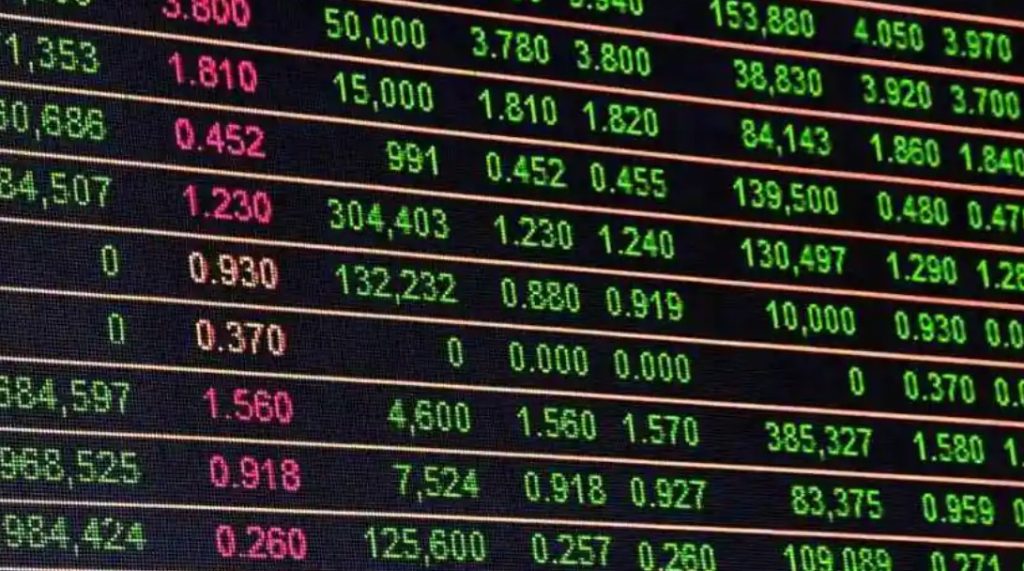
SINGAPORE — Shares in Asia-Pacific fell in Tuesday morning trade after the S&P 500 fell overnight and closed in bear market territory.
The Nikkei 225 in Japan fell 2% as shares of conglomerate SoftBank Group declined more than 3%, while the Topix index declined 1.55%.
In Hong Kong, the Hang Seng index slipped 0.98% in early trading as Hong Kong-listed shares of Alibaba plunged 4.77%.
Mainland Chinese stocks also declined as the Shanghai Composite fell 1.09% and the Shenzhen Component slipped 1.974%.
South Korea’s Kospi dipped 1.37%.
Australia’s S&P/ASX 200, which returned to trade Tuesday following a holiday yesterday, tumbled 4.78% — and was one of the worst performers in the region. MSCI’s broadest index of Asia-Pacific shares outside Japan traded 1.61% lower.
On Wall Street overnight, the S&P 500 fell nearly 4% overnight to 3,749.63, closing in bear market territory, or down more than 20% from its January peak.
Other major indexes stateside also saw big declines. The Dow Jones Industrial Average dropped 876.05 points, or 2.79%, to 30,516.74. The tech-heavy Nasdaq Composite lagged, plunging 4.68% to around 10,809.23.
Fed expectations
The losses on Wall Street came as investors braced for a potentially faster pace of interest rate hikes by the U.S. Federal Reserve following Friday’s hotter-than-expected consumer inflation report.
Fed policymakers are now contemplating the idea of a 75-basis-point rate increase later this week, according to CNBC’s Steve Liesman. That’s bigger than the 50-basis-point hike many traders had come to expect. The Wall Street Journal reported the story first.
“I think the simple way of explaining it is that, if [the Fed] don’t get inflation under control now, they may have a 10-year inflation problem and we go back to you know, the economic circumstances of the 70s,” Eric Robertsen, global head of research at Standard Chartered Bank, told CNBC’s “Squawk Box Asia.”
The stock markets are now starting to “reconcile” with that prospect, Robertsen said.
“Risk assets have plummeted with recession risk rising given the surge in yields and expectations of the Fed doing a Volcker,” Tapas Strickland, director of economics at National Australia Bank, said in a note on Tuesday.
In the early 1980s, former Fed Chief Paul Volcker helped tame inflation by raising benchmark interest rate to close to 20% and sent the economy into recession.
“If the Fed hikes by 75bps that will be a true Volcker moment and underscore front loading, a 50bp hike in contrast would cement the likelihood of 50bp hikes at every meeting for the rest of the year,” Strickland said.
The yield on the benchmark 10-year Treasury note recently saw its biggest move since March 2020, and last stood at 3.37%. The 2-year rate also saw a big jump and is currently trading at 3.415%. Yields move opposite to prices.
The 2-year rate now sits higher than the 10-year Treasury yield, representing an inversion – a measure closely watched by traders and often viewed as a potential indicator of recession.
On Wall Street overnight, the S&P 500 fell nearly 4% overnight to 3,749.63, closing in bear market territory, or down more than 20% from its January peak.
Fed expectations
The losses on Wall Street came as investors braced for a potentially faster pace of interest rate hikes by the U.S. Federal Reserve following Friday’s hotter-than-expected consumer inflation report.
Fed policymakers are now contemplating the idea of a 75-basis-point rate increase later this week, according to CNBC’s Steve Liesman. That’s bigger than the 50-basis-point hike many traders had come to expect. The Wall Street Journal reported the story first.
“I think the simple way of explaining it is that, if [the Fed] don’t get inflation under control now, they may have a 10-year inflation problem and we go back to you know, the economic circumstances of the 70s,” Eric Robertsen, global head of research at Standard Chartered Bank, told CNBC’s “Squawk Box Asia.”
The stock markets are now starting to “reconcile” with that prospect, Robertsen said.
“Risk assets have plummeted with recession risk rising given the surge in yields and expectations of the Fed doing a Volcker,” Tapas Strickland, director of economics at National Australia Bank, said in a note on Tuesday.
In the early 1980s, former Fed Chief Paul Volcker helped tame inflation by raising benchmark interest rate to close to 20% and sent the economy into recession.
“If the Fed hikes by 75bps that will be a true Volcker moment and underscore front loading, a 50bp hike in contrast would cement the likelihood of 50bp hikes at every meeting for the rest of the year,” Strickland said.
The yield on the benchmark 10-year Treasury note recently saw its biggest move since March 2020, and last stood at 3.37%. The 2-year rate also saw a big jump and is currently trading at 3.415%. Yields move opposite to prices.
The 2-year rate now sits higher than the 10-year Treasury yield, representing an inversion – a measure closely watched by traders and often viewed as a potential indicator of recession.





























